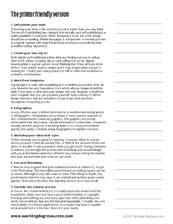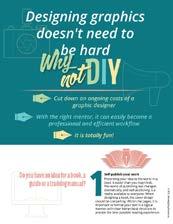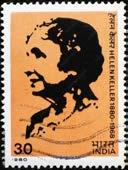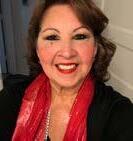TEACHERS

The Miracle Worker-A story of Empowerment Slavery ended after World War II??!!?
Why Facts
Matter?
Correcting
Misconceptions
March 2023 The magazine by teachers for teachers
Merit Pay: Is it now time to pull back high stakes testing along with ‘Merit Pay’ as a reward?
by Dr. Hans Andrews

Teachers Making a Difference | Issue 9 March 2023 1
8: Magically Empowering
Issue
Making a difference




The Science of Teaching www.testprepcertification.com
Editor’s letter
When Empowered Women Empower Women, they do so by giving them the opportunity to thrive, they will not only improve their own lives, but also have a positive impact on their families, communities, and most of all, their businesses.
This is easy to say but not as easy to do. To be a woman that empowers other women you must:
Be yourself I thought that if I acted tough, I’d achieve more success. I dressed more professional when I went to work. My hair and makeup were always neat to perfection. I rarely dared to talk about my family. I was taught to keep my family secrets to myself. I was embarrassed about who I was and where I came from. But one day, I decided to stop pretending. I started talking about my family with those around me, and to my surprise, people began relating to me, our relationships grew stronger. I did not have to hide from my nationality anymore. I became unbelievably transparent. I am Mexican and I grasped my culture and language and when I showed pride, others were proud with me and for me.
Trust your instincts. Trusting your instincts is very important. Women are naturally wired with great intuition. I had to do a lot of self-talk to gain confidence in knowing that what I set out to do I would succeed. I had to shut down that negative voice and speak affirmations that matched and edified my skills and abilities. I faked it until I felt confident, I would make it. It was not until then that I began to trust my ability to succeed, and now I never look back. I walk forward and know that I can and will accomplish all that I set my mind on.
Embrace your mistakes. I love this one the most. I look at Thomas Alva Edison. He is my role model. He failed 2774 times according to his records and then reached a working design of an electric light bulb. I do not know how many mistakes I have made in my lifetime, but I bet its more than Edison’s. The one good thing about mine are that they are in the realm of life experiences not just in light bulbs. I now have a plethora of memories/
by Dr. Cathy Coker

mistakes to draw from. I was afraid to talk about my mistakes because I thought it would make me look too weak. But little did I know other women were going through similar trial and tribulations and since I had that color of t-shirt it was easy for me to share from what I had learned. I can give some solid examples of what Not to do. I bet If mistakes were holes in our body my body would look like Swiss cheese.
When women adopt leadership roles, they contribute a unique set of skills, ideas, and life experiences that can broaden their circle of influence. So Empowered Women Empower Women just because we are not afraid of who we are, what we have done to get to where we are, and what we must do to achieve more than what we have.
I am a teacher, a woman, a mother, a wife, a colleague, a friend, but most of all I am a mistake maker. That is why and how I can empower those around me. What do you need help on? Send me you trial and tribulations to cokercathy70@yahoo. com and I bet I have that t-shirt. Just let me know what color and size you need yours in.
Let me know what you think. Should we have Spring Forward or shall we have consistency. Maybe we should ask the Farmer’s cows what they want? Send me your ideas to cokercathy70@ yahoo.com. ed for the winter of 1974, but there were complaints of children going to school in the dark and working people commuting and starting their work day in pitch darkness during the winter months, and it was repealed a year later. Then why are we still springing forward and falling back? We need to make up our mind. Don’t we have a say in this?
Let me know what you think. Should we have Spring Forward or shall we have consistency. Maybe we should ask the Farmer’s cows what they want? Send me your ideas to cokercathy70@yahoo. com.
Teachers Making a Difference | Issue 9 March 2023 3
Designers: Rivette Pena
Stephane Bowker
Contributing Photographers and Stock Libraries:
Adobe Stock
Unsplash
Andy Dominguez
Advertisements: Dr. Cathy Coker


Marketing: Alicia Grace
Thank you to Stephane Bowker at Working Dog Resources for providing tailored training for the layout of Teachers Making a Difference.



Teachers Making a Difference Issue 8, March 2023 4 CONTENTS 28 Merit Pay: Is it now time topull back high stakes testing along with ‘Merit Pay’ as a reward? 6 14 24 Vowel Clustering Teaches Handwriting part 1 Correcting Misconceptions A Bill of Rights to Improve Teaching Conditions Published by: C&P Educational Consultants Editors: Dr. Cathy Coker
Rivette Pena
What


What is Learning? Teacher Author


Empower Yourself


Teachers Making a Difference | Issue 9 March 2023 5 Name The Miracle Worker 2 3 4 10 1 12 13 14 16 17 A 16 th fi t d 8 th t i t 3 8 9 16 18 26 29 38 Editors Letter Empowered Women Empower Women The Miracle Worker Reading Activities
is Daylight Savings Time? Brown Bagging It- Chili Glazed Salmon
Vowel Clustering Teaches Handwriting Part 1
by Elaine Clanton Harpine, Ph. D
Part 1: Handwriting Helps Children Learn to Read

This will be a two-part article on the importance of teaching handwriting at the same time as teaching reading. Handwriting and reading are connected. They work together.
We assume that because a child has been shown both capital and lowercase letters that they have learned them. This is not the case, and this is one of the first big mistakes often made in teaching reading. Just because a child can sing the alphabet song, does not mean that they know the alphabet letters and their sounds. Vowel clustering stresses letter sounds.
It is also important to teach handwriting to older students. I have worked with 4th and 6th graders who did not know their lower-case alphabet. Everyone assumed that they did, but they did not.
lowercase letters. Rearrange the alphabet letters so that the student is looking at the letter and identifying the letter, not just remembering it from the song or a chart.
We read predominantly with the lower-case alphabet. So, when teaching reading, start with the alphabet. Teach both the capital letters and lowercase letters. Teach them separately. Then mix the capital and lowercase letters together, not in alphabetical order and not in pairs, to make sure that students can identify both capitals and
Teach the alphabet first. Then, you will have a much stronger foundation for teaching reading later.
This is the kind of foundation that vowel clustering is built upon. Once the child has letter identity, letter shape, and letter sounds, then you are ready to introduce simple words, but not before. It’s like building a house. Build the foundation before you try to add the roof.
With vowel clustering, children learn to break words down into letter sounds or sound clusters.


Teachers Making a Difference Issue 8, March 2023 6
Handwriting and reading work together, so, if you want to teach a child to read, you must also teach a child to write. Improving a child’s handwriting is one of the first steps in helping a child learn to read. It is not enough to just be able to sing the alphabet song; although, the alphabet song is very helpful in learning to alphabetize. To read, the student must also be able to identify and say the name of each alphabet letter. Then, the student must be able to write the letters correctly.
After a child can identify the alphabet letters and write each upper and lowercase letter correctly, then teach that letters represent oral sounds. Vowel clustering teaches students to work with letter sounds. Start with the consonants. Save the vowels for later. Just say, “This is a letter a; it’s a vowel. We’ll talk about that later. For now, we’ll just use its letter name.”
Students can arrange words matched to their vowel sounds.

If you would like more research on the importance of teaching letter sounds, go to my reading blog: https://www.groupcentered.com/reading-blog/ tutoring-hint-10-how-can-we-best-use-scientificresearch-when-teaching-reading-part-1-the-orallanguage-system

If you have questions, I am always happy to help. Contact me: clantonharpine@hotmail.com



 Elaine Clanton Harpine, Ph. D.
Elaine Clanton Harpine, Ph. D.
If you are looking for creative activities with alphabet letters and correct pronunciation of letter sounds, I devote an entire chapter on teaching consonant sounds in my new book:

Why Can’t We Teach Children to Read? Oh, but Wait, We Can.

Teachers Making a Difference Get your free guide here www.workingdogresources.com
Look out for Part 2 in the April Issue of Teachers Making a Difference.
The Miracle Worker
by Rivette Pena M.A.
William Gibson was born and raised in New York City. He later went on to study theatre at City College of New York. In 1957 he wrote the The Miracle Worker as a teleplay. Then he wrote it as a 3 act play in 1959.
This biographical play told the story of Anne Sullivan tutor of Hellen Keller and how she taught her sign language. Hellen Keller was blind, deaf and mute and lost her sight and hearing at 18 months old.



Her parents had to make a decision of whether or not to send their daughter to an asylum because they could not control her.
Annie who was half blind herself, came in and with her unusual teaching style and determination she managed to help Hellen learn sign language and opened up a whole new world for her.
This is such an inspirational story of a determined teacher who put everything she had into teaching this child to communicate. Not just communicate but to learn and flourish.
One extraordinary women leads another to find her voice and conviction. Hellen Keller went on to become an American author, disability rights advocate, political activist and lecturer. She campaigned for union rights and Women’s Suffrage.
In doing so she inspired so many others.
In the spirit of Women’s History Month, I saw it fitting to introduce these two remarkable women.
Teachers Making a Difference Issue 8, March 2023 8
The Miracle Worker
Across
3. when you cannot see
6. the last name of the author
7. the third word of the title
10. what they called the father
12. when you cannot hear
14. the way annie and helen communicate
15. the boy who helped the family
16. the first word helen spelled
17. the format of the book
18. the first name of the author Down
1. the name of the deaf and blind girl
2. Annies last name
4. the amount of weeks annie kept helen
5. the second word of the title
8. the protagonist
9. the last name of the family
11. how old is helen ?
13. the moms name
Teachers Making a Difference | Issue 9 March 2023 9 Name:
1 2 3 4 5 6 7 8 9 10 11 12 13 14 15 16 17 18
Teachers Making a Difference Issue 8, March 2023 10 Name: Date:
E T J D S K E L L E R Y A L P D N U Y E R Q U X X O P M I R A C L E F M U G G R V U S D I S Y W R I I G I V I A K C K L K N O S B I G J B U I N G U F A T X L G D D L C V Q H E W W Y G A P C U E N O G U A W I V W I J F N E T N I S L I A Z P O P Q K J J J A D A R T L K M H Q D N I L B L P J L H I K T W O Y O C W A E J W X R V N A N S H S R V M B D A I X L F E T G U K E X Z N D A M I Z N Z V E K L I N V M P T B E I Y U W N M O L R P S L V Q I S L E L M T I A I N Q O E E Q L G X C X J L H B V L O N U W W K Z R P Y J K G I A I M Y I Z S T X S O H E L E N N W R C U S M Y I F V keller helen kate worker miracle two twelve william doll gibson annie captain play sign language blind deaf sullivan james
The Miracle Worker
W o r k e r
k e l l e r h e l e n k a t e w o r k e r m i r a c l e t w o t w e l v e w i l l i a m d o l l g i b s o n a n n i e c a p t a i n p l a y s i g n l a n g u a g e b l i n d d e a f s u l
8 . t h e p r o t a g o n i s t
9 . t h e l a s t n a m e o f t h e f a m i l y
1 1 . h o w o l d i s h e l e n ? 1 3 . t h e m o m s n a m e
1 6 . t h e f i r s t w o r d h e l e n s p e l l e d 1 7 . t h e f o r m a t o f t h e b o o k
1 8 . t h e f i r s t n a m e o f t h e a u t h o r D o w n 1 . t h e n a m e o f t h e d e a f a n d b l i n d g i r l 2 . A n n i e s l a s t n a m e 4 . t h e a m o u n t o f w e e k s a n n i e k e p t h e l e n 5 . t h e s e c o n d w o r d o f t h e t i t l e
A c r o s s 3 . w h e n y o u c a n n o t s e e 6 . t h e l a s t n a m e o f t h e a u t h o r 7 . t h e t h i r d w o r d o f t h e t i t l e
1 0 . w h a t t h e y c a l l e d t h e f a t h e r
1 2 . w h e n y o u c a n n o t h e a r
1 4 . t h e w a y a n n i e a n d h e l e n c o m m u n i c a t e
1 5 . t h e b o y w h o h e l p e d t h e f a m i l y
Teachers Making a Difference | Issue 9 March 2023 11 N a m e : D a t e : T h e M i r a c l e W o r k e r E T J D S K E L L E R Y A L P D N U Y E R Q U X X O P M I R A C L E F M U G G R V U S D I S Y W R I I G I V I A K C K L K N O S B I G J B U I N G U F A T X L G D D L C V Q H E W W Y G A P C U E N O G U A W I V W I J F N E T N I S L I A Z P O P Q K J J J A D A R T L K M H Q D N I L B L P J L H I K T W O Y O C W A E J W X R V N A N S H S R V M B D A I X L F E T G U K E X Z N D A M I Z N Z V E K L I N V M P T B E I Y U W N M O L R P S L V Q I S L E L M T I A I N Q O E E Q L G X C X J L H B V L O N U W W K Z R P Y J K G I A I M Y I Z S T X S O H E L E N N W R C
S M Y I
V
a n
s N a m e : T h e M i r a c l e
H 1 E S 2 L U E B 3 L I N D T 4 M 5 L W I G 6 I B S O N W 7 O R K E R V A 8 K 9 A C 1 0 A P T 1 1 A I N D 1 2 E A F C N W N L K 1 3 L E S 1 4 I G N L A N G U A G E L E E T V R J 1 5 A M E S E D 1 6 O L L P 1 7 L A Y W 1 8 I L L I A M
U
F
l i v
j a m e

Teachers Making a Difference Issue 8, March 2023 12
Teachers Making a Difference | Issue 9 March 2023 13
Correcting Misconceptions
by Rivette Pena M.A
Just the word “Math” strikes the fear in the hearts of many. There are an endless amount of misconceptions. It is on the teacher, to foresee these misconceptions and figure out how to address them.
When addressing misconceptions or correcting student mistakes, math professor Dr. Cathy Coker uses an old video clip by Abbot and Costello.
Samuel King, a student in Dr. Coker’s college course, reminds us that students can hold on tight to misconceptions.
This Abbott and Costello video reaffirms how confidently someone may feel about how to tackle a math problem, even if they are way off base. While in the extreme, this video demonstrated three altogether different, and definitely incorrect, methods of tackling this problem. Setting aside the multiple arithmetic errors, there are other ways to model out this problem for students.

Most of Dr Coker’s students pointed out that the most important misconceptions were in method and place value. Shaheen Qureshi acknowledged that certain skills must be present in order to be successfull when introducing your students to mulitplying and dividing.
In this clip, Costello tries to convince his landlord that 7 x 13 is 28. He shows him using division, multiplication and then finally addition. All of which are incorrect however, his landlord can’t figure out how he keeps getting the right answer.
Dr. Coker then poses the question to her students, “How would you correct these misconceptions?”
So my question to you is the same, “How would you handle these misconceptions?” A person has a preconceived notion on how to solve problems and you are responsible for tearing down the old ways and introducing the new.
It’s not simply relaying new information. You have to disprove their belief first. Because they don’t believe they are wrong.
Particularly in this video’s example students [should] have a clear understanding of addition to multiplication.
If a child can’t add then multiplying won’t necessarily be understood fully. I had a student that I was tutoring in math. She had difficulty with her multiplication facts. As I spent more time working with this student, I realized she could not add well enough to skip count. So I realized then that I had to step back and teach her how to skip count. In order for her to excel at multiplication she needed a str4ong addition foundation.
If a teacher is aware of misconceptions, they should be addressed before the lesson. For instance, in elementary school, students may believe that if you multiply two numbers
Teachers Making a Difference Issue 8, March 2023 14
that the product will be larger than the two factors. However, in middle school this can be a misconception because if one or both of the factors is a fraction then the product will be smaller. This is a misconception we would want to be mindful of when planning our lessons. Our lessons shouls address this misconception in some way in order for the student to move past it and have a deeper understanding of the skill or concept.
Annette Gomez explains some strategies she would use in this scenario.
In the video, what I agree with is the format the problem is written in, except for the 1st example. All of the misunderstanding comes from the place value and how to correctly do the solve the problems. The way I would solve this is to write out in the follow way (using our place values): 20 13 x 7 91
If the lesson, has been conducted and misconceptions are now mistakes that need to be clarified. How do you address them in this situation? Stacy Barnwell has this to say :
The numbers in this problem are small enough to use manipulatives to demonstrate that Costello’s answers and methods are incorrect. Students could multiply the numbers on a vertically-lined paper trying Costello’s method, where he lines up each line on the right, and trying the correct method, where each successive line shifts one place left. They could also use manipulatives (paper clips, pieces of paper, etc.) to break 28 into 7 pieces or to multiply 7 piles of 13. Comparing the realworld answer with their various experiments will demonstrate that they must understand and pay attention to place value.
The strategy here is multiplying the 7 by 3, which is 21. The 1 is written under the ones place and we carry the 2 over to the tens place (on top of the number 13). Then multiply 7 by 1, which is 7, then add the 2 we carried over, which makes is 9. The answer is 91. However, I understand now that there are other newer methods to help solve this such as decomposing, which would break down the number 13, for example, to 10 by 7 and 3 by 7, then add the two numbers 70 and 21 for our answer. I would also use the array strategy, which is using columns or rows to visualize our answer, such as, 7 columns of 13 or 13 columns of 7, etc. When we use these two strategies, we can prove the methods used in the video are wrong. I would show and use decomposing and building arrays to my classroom to help avoid the mistakes made in the video. In my opinion, the decomposing strategy helps to solve faster, and the array is a good visualization method.
Math is something that many kids have trouble with. Just the mention of it makes hearts race and anxiety rise. We need to make this as easy a journey as possible. Empower our youth to excel at math.


Teachers Making a Difference | Issue 9 March 2023 15
Are you ready to lose an hour of sleep this month? No Not Me!!!
Who came up with Daylight Savings Time (DST) anyway?

The idea of aligning waking hours to daylight hours to conserve candles was first proposed in 1784 by U.S Benjamin Franklin. Franklin suggested that waking up earlier in the summer would economize on candle usage and calculated considerable savings.

What is Daylight Savings Time?
Benjamin Franklin published the proverb «early to bed and early to rise makes a man healthy, wealthy, and wise. I never knew that he was the one that said that.
Did you know that it is a common myth in the United States that DST was first implemented for the benefit of farmers.

Teachers Making a Difference Issue 8, March 2023 16
Farmers have been one of the strongest lobbying groups against DST since it was first implemented. The factors that influence farming schedules, such as morning dew and dairy cattle’s readiness to be milked, are ultimately dictated by the sun, so the time change introduces unnecessary challenges. I agree with the farmers. I like consistency when it comes to getting my rest.
DST was first implemented in the US with the Standard Time Act of 1918, a wartime measure for seven months during World War I in the interest of adding more daylight hours to conserve energy resources. Year-round DST, or “War Time”, was implemented again during World War II. After the war, local jurisdictions were free to choose if and when to observe DST until the Uniform Time Act which standardized DST in 1966.
Permanent daylight saving time was enacted for the winter of 1974, but there were complaints of children going to school in the dark and working

people commuting and starting their work day in pitch darkness during the winter months, and it was repealed a year later. Then why are we still springing forward and falling back? We need to make up our mind. Don’t we have a say in this?
Let me know what you think. Should we have Spring Forward or shall we have consistency. Maybe we should ask the Farmer’s cows what they want? Send me your ideas to cokercathy70@ yahoo.com.
Teachers Making a Difference | Issue 9 March 2023 17
Brown Bagging It
Chili Glazed Salmon

INGREDIENTS
• 24 oz salmon, 3 fillets
• ½ cup chili sauce
• ¼ cup fresh scallions
Directions
1. Preheat oven to 400°F (200˚C).
2. In a bowl, mix together the salmon, chili sauce, and the scallions.
3. Place the fillets on a baking tray lined with parchment paper. Spoon any leftover sauce on top of the salmon.
4. Bake for 12-15 minutes, until the salmon is cooked but still tender.
5. Enjoy!

Love yourself and your family with this easy delicious recipe.
Please submit any recipes you would like to share by sending them to articles4magazine@gmail.com subject: recipes visit www.testprepcertification.com for submission requirements
Teachers Making a Difference Issue 8, March 2023 18
Tasty.co


Empowering Educators Curriculum Ideas Career Counseling Emotional Support Classroom Management T-Tess Strategies Contact Information drcathycoker@gmail.com (210) 313-7739 Need help?

Teachers Making a Difference Issue 8, March 2023 20

Teachers Making a Difference | Issue 9 March 2023 21
Slavery Ended After World War II??! Why Facts Matter
Elizabeth Breau, Ph.D
When I decided to write a history book for teens who are studying for the SAT, I was focused on gaps in my students’ education that caused them to make mistakes on history passages that a little more knowledge would help them avoid. History According to SAT would be just that--a chronological summary of the events and ideas that are referenced in test passages. I wanted to share the background knowledge that I use to get the answers right without resorting to the testtaking strategies I teach because I just know them. My students, on the other hand, do not.

For example, many students know nothing about the French Revolution. They misread passages by Edmund Burke, who opposed it, as well as a literature passage from The Scarlet Pimpernel, a 1905 novel. Although an introductory blurb informs students that the novel is about English noblemen who rescue members of the French nobility during the Reign of Terror, this “context clue” is useless to teens who do not know that the Reign of Terror took place during the French Revolution. They make multiple mistakes because they have no idea why the noblewoman in the passage needed to escape Paris.

Teachers Making a Difference Issue 8, March 2023 22
It gets worse. Numerous high school students have told me that American slavery ended in 1945--right after the Allies won World War II! Others miss key points in a passage from a 1992 speech about the AIDS epidemic because they do not understand the speaker’s indirect references to homophobia. Still others have never heard of South African apartheid, so they do not understand speeches by Nelson Mandela.
Even so, I was unprepared for my research and writing to parallel some of the most disturbing current events of 2020-2022. I was writing about lynching when George Floyd was murdered, and Black Lives Matter protests coincided with my learning about Juneteeth and the Greenwood Massacre in Tulsa, Oklahoma.
The January 6 insurrection in Washington, D.C. also got into the book. Originally, my introduction to the Cold War included this sentence about the United States: “People elect new leaders when they want change, and our government’s respect for their choice is shown by a peaceful transfer of power from one leader to the next.” After the riot, I felt compelled to add, “The only exception was the Capitol Riot on January I, 2021. However, the riot will probably not be on the SAT because it is recent, unresolved, and controversial.”

These mistakes matter, and not just for standardized tests. The Pew Research Center reports that about two-thirds of Americans believe that democracy is in danger.The French Revolution and the struggle for racial equality in the United States and South Africa are part of a larger story about how human beings around the world became convinced that all people are born with inalienable rights to “life, liberty, and the pursuit of happiness” and that governments “derive their just powers from the consent of the governed.” As it happens, this story forms the narrative arc of the history passages on the SAT.
Disturbing as that sentence is, it is also an important reminder that our democracy is founded on the idea that we can resolve conflicts without violence--because an educated citizen is able to understand complex issues and participate in solving them. As I watch political violence rise nationwide, I hope that the ideas in my book can help the next generation of leaders understand why our democracy is worth preserving.
Elizabeth Breau, Ph.D., is a private English tutor and the author of History According to SAT: A Content Guide to SAT Reading and Writing. Her website is www.historyaccordingtosat.com, and she can be reached at elizabeth.breau@gmail.com.


Teachers Making a Difference | Issue 9 March 2023 23

Teachers Making a Difference Issue 8, March 2023 24 Hero Measures V2
A Mathmindset 2023 c Name Date Period The Justice Pack 1 2 3 4 5 6 7 9 10 11 12 13 14 15 8 1. 2. 3. 4. 5. 6. 7. 8. 9. 10. 11. 12. 13. 14. 15. MEAN 5, 8, 6, 7, 4 MEDIAN 1, 3, 5, 2 MEAN 10, 9, 12, 10 RANGE 4, 12, 3, 4, 2 MEAN 6, 4, 5, 5, 2 MEDIAN 19, 20, 18, 19, 20 RANGE 16, 15, 20, 12 MEDIAN 19, 18, 19, 16 RANGE 100, 101, 105, 90, 75 MEAN 27, 25, 13, 15, 20 RANGE 1, 0, 4, 8, 6 MEDIAN 15, 17, 19, 15, 16 RANGE 15, 25, 6, 18, 27 MEAN 51, 50, 54, 53 MEDIAN 10, 12, 15, 10, 11, 12 Blue ( 52, 6, 18.5), Green ( 8, 16, 2.5), Orange ( 4.4, 18, 19), Purple ( 11.5, 30, 10) Red ( 20, 10.25, 21)
Measures of Central Tendency









Teachers Making a Difference | Issue 9 March 2023 25 © A Math Mindset 2018 Find the volume. Find the volume. Find the volume. r = 7.1 in Find the volume. Find the volume.
Activity Volume Cylinders, Cones and Spheres Name:___________________ Date:__________ Per:___ Find the volume. Find the volume. Find the volume. Find the volume. Find the volume. 9 in 8 cm 15 cm 11 in 23 in d=25 cm 9 mm 9 mm 4.5 in 2 in 9.1 m 8m 8 in 4 in
Holepunch
What is Learning?
by Dr. Cathy Coker
Learning can be defined as permanent changes in behavior induced by life. As a teacher I need to see that my students will walk away from my lesson with experiences that we both can be proud of, them as the learner and me as the teacher.
I want to be the kind of teacher that gives students the immediate and concrete experiences that will help students achieve the goals that society have set for them.

Isn’t that what we do when we look at their reading and math scores? As I create my reading lesson plans, I wonder what activities will make that learning experience memorable to help my students connect to the author’s purpose.

I am constantly asking myself; what can or how can I leave a lifelong impact on my Social Studies class when I talk about the Civil War. Our job is not to have them memorize names and dates but feel what the people were feeling in that time. As a teacher our job is to make learning more meaningful and impactful.
Why don’t we make them research and role play and design the important information that appeals to them not to what the tests are measuring. Who decides what is meaning and impactful for us to
learn? I hated history until I taught it. Now it is my favorite subject. History transformed me because I found a period in History that I wanted to study. I found that when I study something that interest me, I transform. I did not have to concentrate on the author’s purpose because I had a purpose to read.
I did not have to look at the Informational Text on purpose because I purposely looked at all the captions to learn why the pictures were posted about that person, building, or site. I found that I was hungry for information. When I taught the content I did not have to put on a dog and pony show to get my students to learn because I shared my love for the subject.
Teachers Making a Difference Issue 8, March 2023 26
My enthusiasm was contagious that my students loved what I taught and they got enthusiastic as well which eventually transformed their learning experience. I was my own teacher. I wanted to learn.


I came from a low social economic, Spanish speaking, living in the project’s kind of a student. I can relate with the language barriers our students have. I know what kind of homes they live in. I was just like them. I have this same kind of students in my classroom now. I am sure not every teacher came from an affluent home. If you did great, but if you were average like most of us think; What can we do to help them love to learn?


We cannot control what students learn outside of our classrooms which they so eloquently bring into our classrooms, so why can’t we do the same while we have them in our realm? Let’s model how we feel about our subject and with our enthusiasm transform our teaching into great learning experiences that our students will never forget.
Share with me what you do in your classrooms. I am always looking for new ways and experiences for learning. From your lifelong learner, Dr. Cathy Coker.

Teachers Making a Difference | Issue 9 March 2023 27 Need Nails? Kelsey Rodriguez - Color Street Independent Stylist email: kelseyrodriguez223@yahoo.com webpage: www colorstreet com/nailinspiredbykels facebook : www.facebook.com/groups/nailinspiredbykels
Merit Pay: Is it now time to pull back high stakes testing along with ‘Merit Pay’ as a reward?

 Dr. Hans Andrews
Dr. Hans Andrews

This is a multi-part article. This is part 1 further installments will be in upcoming issues.
Introduction
The United States educational system, along with those in numerous other countries, has been moved into what is called a ‘high stakes’ testing program emphasis across these countries. This emphasis on testing, to show that testing scores for individuals and schools can be improved, has been found to produce mixed results and has shifted some of the school curriculum away from previously broader curriculum for students into a much greater emphasis on test preparation and testing. A main incentive brought into the testing movement has been the offering of ‘merit pay’ for those teachers who are able to produce improved student testing scores. This incentive can now be seen as source of conflict between school systems and their teachers and between teachers. School atmosphere of cooperation and assistance between teachers has been greatly strained.
There are now mixed but fairly negative results from the high stakes testing program being revealed in recent national reviews of testing and the outcomes achieved. There has been the embarrassment in public identification stories reported of cheating within schools and states as a result of the pressure to show improved student scores. In addition, the improved systems of teacher evaluation, recruitment of higher quality teachers, and removal of poor and incompetent teachers all have shown disappointing results at very high financial costs.
The role of merit pay has also not lived up to the promises made. It has been found not producing the increased student test outcomes in numerous areas where it had been initiated.
This article presents an overall look at each of these above pieces in the ‘high stakes’ testing programs that have been taking place in recent years. Some historical results of merit pay are also highlighted to show concerns and problems with merit pay over the past 45+ years.
Teachers Making a Difference Issue 8, March 2023 28
Merit pay and recognition defined


The National School Board Association (NSBA) provided the following definitions of merit pay and recognition (1987):
• Merit Pay. Merit pay programs link teachers’ salaries to periodic assessments of their performance. Financial bonuses are awarded to the teachers who receive the highest ratings.

Association of Elementary School Principals (Million, 2004), several important things came to the forefront relative to the recognition they had received:
• It boosted self-esteem.
• It renewed confidence in their teaching and reinforced what they had been doing.
• Payment by Results. Merit pay programs that base individual teacher bonuses on their students’ test scores gains.

• It gave them a voice in their profession
The non-monetary incentive programs defined by the NSBA included:
Teacher Recognition Programs. These are programs that provide public recognition for outstanding teachers. The Teacher-of-the-Year program is one of the well-known programs.
Recognition Rewards could include purchase of additional classroom equipment or attendance at professional conferences, a supper with the governing board, a plaque, public information releases on these teachers being recognised, etc (pp 95-97)

The alternative of ‘recognition’
In a survey of All-USA winners by the National
‘More than anything,’ one teacher said, ‘the award just reinforced what we have known all along We are doing the right thing for kids’ (p.1).
Harris Interactive (1999) found ‘recognition’ was one of the three top drivers of satisfaction. The research came from the Gordon S. Black Corporation (GSBC) that also found that found in a survey of 23,569 teachers that approximately 50 percent had no form of teacher recognition in their schools.
Teachers Making a Difference | Issue 9 March 2023 29

Teachers Making a Difference Issue 8, March 2023 30

Teachers Making a Difference | Issue 9 March 2023 31
by Dr Cathy Coker



Teacher Authors Submit Teacher Author information to articles4magazine@gmail.com Subject: Teacher Authors visit www.testprepcertification.com for submission requirements
All excerpts are taken from this delightful children’s book Rabbit’s Easter Celebration the Timid Rabbit Series ®. Available on Amazon
Rabbit's Easter Celebration
Teachers Making a Difference | Issue 9 March 2023 33 Name: Date:
K E S Y D S V A I M F P G X C F K H R R O F U I N O I T A R B E L E C S Z N L G Z C R L Y W V G L O T M P F E R B A H T T W I Q S E M G R Q Q K M L Q P K N Y R S M Y Z L A W R P D X T K S G B D W J N F R U T D O Y C T W E M P N T Y T J B U A Q Q E E J U S I G D W N R A R G S N O D E Z Z H M N T I G M D C Z O S F C E Z T F R T H A M R M O S D U D R B F N R L N Y L E T R N I Y C T L P A D O O B U A D N Z J Y Y Q G A K D R D U G O E U D I E W S E S K X J J O U C C D A E I C Y U T K K A D Z R Z Q S Z K P E T A E B S G G E W G E Y R T M E B K R V M E N S C N B K B V F L M T D T X H D N L U F R O L O C G I N I V A W M O W J H S P P D P U O L C H M R T Z D A D O S O R B K G M U N G J A W S H R W Q M P G D N P W K L Q X I Y V O V O R J H A M I W D D S A I F U G E X O N O J K I S S W Y W A H T Z S B I U K N W Q T S R E D Y L C J A H I J O Q T J J G L I P J F Z Z E P J E M I I J N C T W C A E U L L A J U R W Y V V U V H O Y L K D X I N C O R K M Y N F W Z O O J A B A C V S E Z W N F F I C X D A W Y G P G V G P R V P N L C D Q I V O U J Z O P D D H F D F K Z T W D X U C N F J C D O B W R J U L B J E W J P M S V H P M D C V T H T T L O K F S R G celebration spring colorful grass hidden overnight wondered munched camper sandwich duckling delicious carrot eggs bear easter rabbit critter treats basket
Rabbit's Easter Celebration
Word Bank
eggs colorful treats celebration basket munched sandwich easter carrot delicious bear wondered grass overnight hidden spring camper duckling critter rabbit
Teachers Making a Difference Issue 8, March 2023 34 1. BTCOERNLAIE 2. PSNIGR 3. LCRFULOO 4. SAGSR 5. DIHDNE 6. TNHOREGIV 7. DOEWEDNR 8. DMUCEHN 9. REAPCM 10. WNACSHDI 11. GUCKNDIL 12. UISCEIDLO 13. OCRATR 14. SGEG 15. EABR 16. RESEAT 17. TAIRBB 18. REITCTR 19. TTEARS
KSBTEA
20.
Name: Date:
R a b b i t ' s E a s t e r C e l e b r a t i
celebration spring colorful grass hidden overnight wondered munched camper sandwich duckling delicious carrot eggs bear easter rabbit critter treats basket
Rabbit's Easter Celebration
Teachers Making a Difference | Issue 9 March 2023 35 N a m e : D a t e :
n K E S Y D S V A I M F P G X C F K H R R O F U I N O I T A R B E L E C S Z N L G Z C R L Y W V G L O T M P F E R B A H T T W I Q S E M G R Q Q K M L Q P K N Y R S M Y Z L A W R P D X T K S G B D W J N F R U T D O Y C T W E M P N T Y T J B U A Q Q E E J U S I G D W N R A R G S N O D E Z Z H M N T I G M D C Z O S F C E Z T F R T H A M R M O S D U D R B F N R L N Y L E T R N I Y C T L P A D O O B U A D N Z J Y Y Q G A K D R D U G O E U D I E W S E S K X J J O U C C D A E I C Y U T K K A D Z R Z Q S Z K P E T A E B S G G E W G E Y R T M E B K R V M E N S C N B K B V F L M T D T X H D N L U F R O L O C G I N I V A W M O W J H S P P D P U O L C H M R T Z D A D O S O R B K G M U N G J A W S H R W Q M P G D N P W K L Q X I Y V O V O R J H A M I W D D S A I F U G E X O N O J K I S S W Y W A H T Z S B I U K N W Q T S R E D Y L C J A H I J O Q T J J G L I P J F Z Z E P J E M I I J N C T W C A E U L L A J U R W Y V V U V H O Y L K D X I N C O R K M Y N F W Z O O J A B A C V S E Z W N F F I C X D A W Y G P G V G P R V P N L C D Q I V O U J Z O P D D H F D F K Z T W D X U C N F J C D O B W R J U L B J E W J P M S V H P M D C V T H T T L O K F S R G
o
1. BTCOERNLAIE
2. PSNIGR
3. LCRFULOO
4.
5. DIHDNE
6. TNHOREGIV overnight 7. DOEWEDNR
8. DMUCEHN
9.
10. WNACSHDI sandwich 11. GUCKNDIL duckling 12. UISCEIDLO delicious 13. OCRA TR carrot 14. SGEG eggs 15. EABR bear 16. RESEA T easter 17. T AIRBB rabbit 18. REITCTR critter 19. TTEARS treats 20. KSBTEA basket W ord Bank spring celebration treats critter delicious wondered hidden grass carrot eggs rabbit duckling sandwich camper easter basket munched bear overnight colorful N a m e : D a t e :
celebration
spring
colorful
SAGSR grass
hidden
wondered
munched
REAPCM camper

Teachers Making a Difference Issue 8, March 2023 36








Teachers Making a Difference | Issue 9 March 2023 37 I mine cal and mental bility Scavenger Hunt (c) A Math Mindset 2018 Math Activities for Middle School and Algebra I Ideal for : Engaging Classwork Activities Self Checking Digital Activities Assessments Homeschool Practice Roy R. Estrada RR E Accounting Tax Services Business Start Ups ph: (210) 723-5389 email: roy.estrada84@gmail.com
Empower Yourself

 by C&P Educational Consultants
by C&P Educational Consultants
Are you wishing for learning and growth opportunities? We have something great for you.
Come join us for a free workshop that trains you on The Science of Teaching Reading.
Get in on the groundfloor of a lucrative endeveor. We will train you to become a Trainer of Trainers. You can go forth and conduct your own seminars.
Whether you are interested in the Science of Teaching Reading or starting your own side business. Come to this free workshop. Earn six hours of continuing education hours. You will leave with some very engaging activities and methods. You will learn how to integrate reading into other content areas. Join us. All that is required is you filling out the interest form.
Teachers Making a Difference Issue 8, March 2023 38

| Issue 9 March 2023 39 You Need Training? C&P Educational Consultants are offering an Introduction to the Science of Teaching Reading. 6 hours If you are interested in a FREE training, fill out the registration form below: Information Location, Date and Time will be emailed to all participants. Sign up before all seats are filled. Visit www.testprepcertification.com for information Door Prizes Free Materials Gift Bags Breakfast and Lunch Included





Teachers Making a Difference Issue 8, March 2023 40 R WOULD YOU LIKE TO ADVERTISE IN OUR MAGAZINE? Contact us at ads4magazine@gmail.com Visit www.testprepcertification.com for pricing and submission requirements Roy R. Estrada RR E TaxAccounting BusinessServices Start Ups ph: (210) 723-5389 email: roy estrada84@gmail com



























 Elaine Clanton Harpine, Ph. D.
Elaine Clanton Harpine, Ph. D.








































 Dr. Hans Andrews
Dr. Hans Andrews



















 by C&P Educational Consultants
by C&P Educational Consultants






